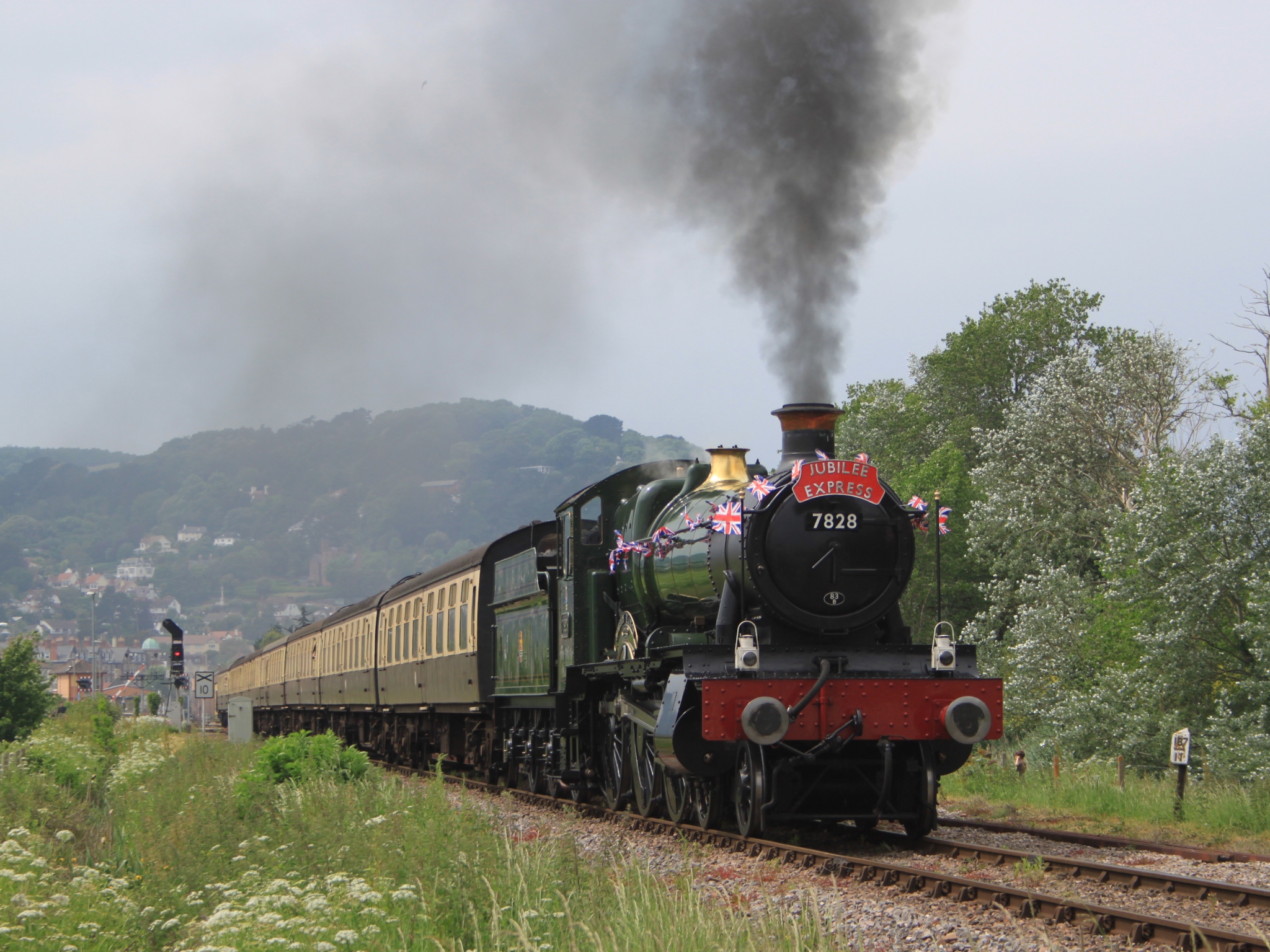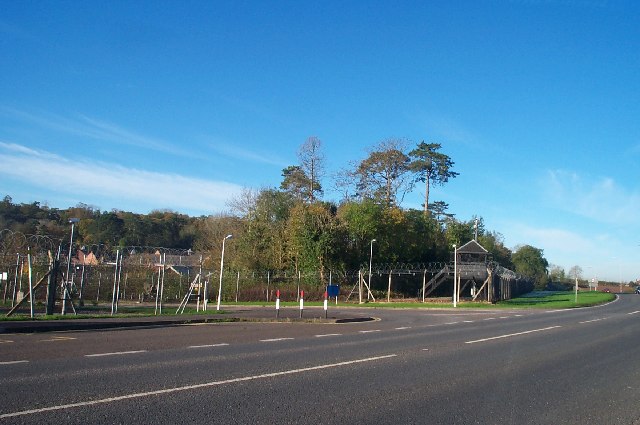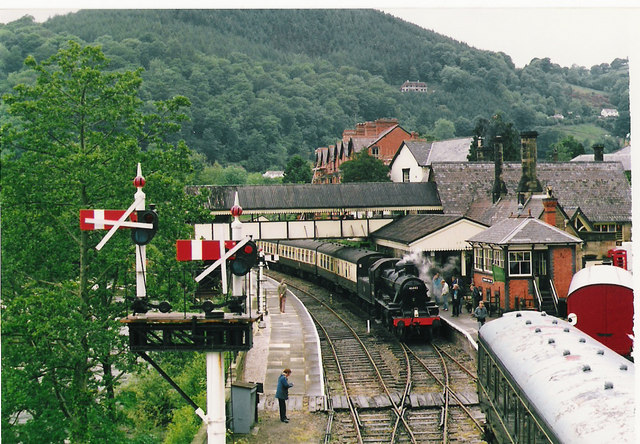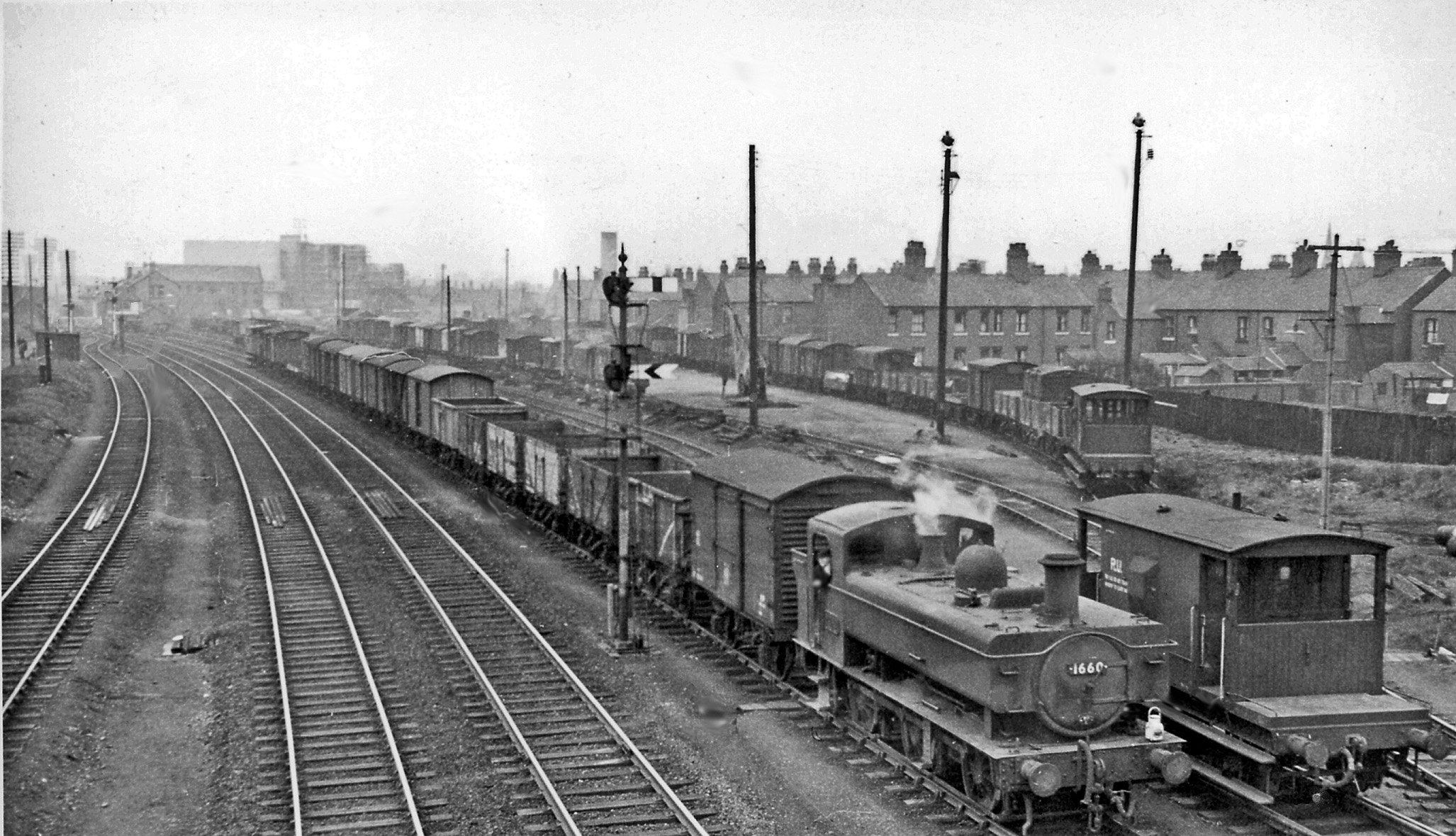|
GWR 7800 Class 7828 Odney Manor
7828 ''Odney Manor'' is a Great Western Railway locomotive part of the Manor Class. It is one of 9 locomotives preserved from the class which originally had 30. Built by British Railways in 1950 it was withdrawn from service in 1965 before being moved to Woodham Brothers scrapyard in Barry, South Wales. Since 2004 it has been owned by the West Somerset Railway, being based there since 1995. In 2011 the locomotive was temporarily renamed ''Norton Manor'' in honour of the local Marine Base near the West Somerset Railway. History 7828 ''Odney Manor'' was first sent to Shrewsbury shed and spent nine years there. 1961 saw it move to Croes Newydd, then two years later it found its way to for a short while before returning to Shrewsbury, from where it was withdrawn in 1965, moving to Barry in 1966. Preservation It was rescued from Barry privately in 1981 and moved to the Gloucestershire Warwickshire Railway where restoration was completed by 1987. It worked on the Gwilli Railway, ... [...More Info...] [...Related Items...] OR: [Wikipedia] [Google] [Baidu] |
Great Western Railway
The Great Western Railway (GWR) was a British railway company that linked London with the southwest, west and West Midlands of England and most of Wales. It was founded in 1833, received its enabling Act of Parliament on 31 August 1835 and ran its first trains in 1838 with the initial route completed between London and Bristol in 1841. It was engineered by Isambard Kingdom Brunel, who chose a broad gauge of —later slightly widened to —but, from 1854, a series of amalgamations saw it also operate standard-gauge trains; the last broad-gauge services were operated in 1892. The GWR was the only company to keep its identity through the Railways Act 1921, which amalgamated it with the remaining independent railways within its territory, and it was finally merged at the end of 1947 when it was nationalised and became the Western Region of British Railways. The GWR was called by some "God's Wonderful Railway" and by others the "Great Way Round" but it was famed as the "Holiday ... [...More Info...] [...Related Items...] OR: [Wikipedia] [Google] [Baidu] |
Minehead 7828 Jubilee Express
Minehead is a coastal town and civil parish in Somerset, England. It lies on the south bank of the Bristol Channel, north-west of the county town of Taunton, from the boundary with the county of Devon and in proximity of the Exmoor National Park. The parish of Minehead has a population of approximately 11,981, making it the most populous town in the western part of the Somerset West and Taunton local government district, which in turn, is the worst area in the country for social mobility. This figure includes Alcombe and Woodcombe, suburban villages which have been subsumed into Minehead. There is evidence of human occupation in the area since the Bronze and Iron Ages. Before the Norman conquest, it was held by Ælfgar, Earl of Mercia and after it by William de Moyon and his descendants, who administered the area from Dunster Castle, which was later sold to Sir George Luttrell and his family. There was a small port at Minehead by 1380, which grew into a major trading centre dur ... [...More Info...] [...Related Items...] OR: [Wikipedia] [Google] [Baidu] |
Railway Locomotives Introduced In 1950
Rail transport (also known as train transport) is a means of transport that transfers passengers and goods on wheeled vehicles running on rails, which are incorporated in tracks. In contrast to road transport, where the vehicles run on a prepared flat surface, rail vehicles (rolling stock) are directionally guided by the tracks on which they run. Tracks usually consist of steel rails, installed on sleepers (ties) set in ballast, on which the rolling stock, usually fitted with metal wheels, moves. Other variations are also possible, such as "slab track", in which the rails are fastened to a concrete foundation resting on a prepared subsurface. Rolling stock in a rail transport system generally encounters lower frictional resistance than rubber-tyred road vehicles, so passenger and freight cars (carriages and wagons) can be coupled into longer trains. The operation is carried out by a railway company, providing transport between train stations or freight customer facil ... [...More Info...] [...Related Items...] OR: [Wikipedia] [Google] [Baidu] |
Norton Fitzwarren
Norton Fitzwarren is a village, electoral ward, and civil parish in Somerset, England, situated north west of Taunton in the Somerset West and Taunton district. The village has a population of 3,046. History The village is on the southern slope of Norton Camp, a large hillfort that shows evidence of occupation from neolithic times, through the Bronze Age, to the Roman occupation of Britain. The Church of All Saints dates from the late 13th and early 14th century. It has been designated as a Grade II* listed building. The parish of Norton Fitzwarren was part of the Taunton Deane Hundred. On 23 November, 2021 a double murder occurred in the village, involving a local IT teacher and coffee shop worker. Governance The parish council has responsibility for local issues, including setting an annual precept (local rate) to cover the council’s operating costs and producing annual accounts for public scrutiny. The parish council evaluates local planning applications and works with ... [...More Info...] [...Related Items...] OR: [Wikipedia] [Google] [Baidu] |
40 Commando
40 Commando RM is a battalion-sized formation of the British Royal Marines and subordinate unit within 3 Commando Brigade, the principal Commando formation, under the Operational Command of Commander in Chief Fleet. Their barracks are at Norton Manor Camp, Norton Fitzwarren near Taunton in Somerset. Tasked as a Commando light infantry unit, 40 Commando (pronounced "Forty Commando") is capable of a wide range of operational tasks. Personnel regularly deploy outside the United Kingdom on operations or training. Whilst 3 Commando Brigade RM are the principal cold weather warfare formation, personnel are capable of operating in a variety of theatres including tropical jungle, desert or mountainous terrain. The Commando is a regular participant in the annual Brigade cold weather warfare exercise in Norway. The unit's first "winter" was 1991, until which the unit was nicknamed the "Sunshine Commando". All personnel will have completed the Commando course at the Commando Training Cent ... [...More Info...] [...Related Items...] OR: [Wikipedia] [Google] [Baidu] |
East Lancashire Railway
East Lancashire Railway is a heritage railway line in North West England which runs between Heywood, Greater Manchester and Rawtenstall in Lancashire. There are intermediate stations at Bury Bolton Street railway station, Bury Bolton Street, , Summerseat railway station, Summerseat and Ramsbottom railway station, Ramsbottom, with the line crossing the border into Borough of Rossendale, Rossendale serving Irwell Vale railway station, Irwell Vale and Rawtenstall railway station, Rawtenstall. Before closure, the line terminated at Bacup railway station, Bacup. Overview Passenger services between Bury and Rawtenstall were withdrawn by British Rail on 3 June 1972. Coal services to Rawtenstall ended in 1980 and formal closure of the line followed in 1982. The East Lancashire Railway Trust reopened the line on 25 July 1987. The initial service operated between Bury, Greater Manchester, Bury and Ramsbottom, via Summerseat. In 1991, the service was extended northwards from Ramsbotto ... [...More Info...] [...Related Items...] OR: [Wikipedia] [Google] [Baidu] |
Llangollen Railway
The Llangollen Railway () is a volunteer-run heritage railway in Denbighshire, North Wales, which operates between Llangollen and Corwen. The standard gauge line, which is long, runs on part of the former Ruabon – Barmouth GWR route that closed in 1965. It operates daily services in the summer as well as weekends throughout the winter months, using a variety of mainly ex-GWR steam locomotives as well as several diesel engines and diesel multiple units. A extension of the railway has been built to complete the line to Corwen. In March 2021 the railway company announced that, having made a loss in three consecutive years, they had invited their bank to appoint receivers. History Commercial Service: 1865–1962 Llangollen was already a popular place for tourists by the 1840s. Travel up to this time had been by horse-drawn carriage, but by the 1840s the Shrewsbury to Chester line had been completed, which allowed passengers to alight at (later known as Whitehurst Halt), an ... [...More Info...] [...Related Items...] OR: [Wikipedia] [Google] [Baidu] |
Gloucestershire Warwickshire Railway
The Gloucestershire Warwickshire Steam Railway (GWR, GWSR or Gloucs-Warks Steam Railway) is a volunteer-run heritage railway which runs along the Gloucestershire/Worcestershire border of the Cotswolds, England. The GWSR has restored and reopened around of track, operating between and . The most recent extension to Broadway (completed in 2018) involved the company raising £1.38 million. The 28 mile round trip on steam and heritage diesel trains follows part of the route of the former Great Western main line from Birmingham to Cheltenham. The GWSR has a long-term aim of extending a further from Broadway to the national rail network at (where one half of an island platform has since been partly rebuilt for future use). Overview The line was originally part of the Great Western Railway's Cheltenham– Stratford-upon-Avon–Birmingham line, known as the Honeybourne Line, built in 1900–1906, and runs through the Cotswold towns of Winchcombe and Bishop's Cleeve. The line ... [...More Info...] [...Related Items...] OR: [Wikipedia] [Google] [Baidu] |
Croes Newydd
Croes Newydd was a large steam locomotive shed, marshalling yard and junction in Wrexham, in Wales. History The Wrexham and Minera Railway was opened on 22 May 1862, with little ceremony except a note from the Traffic Manager of the Great Western Railway stating that from that date all traffic on that line would be invoiced to or from Croesnewydd station instead of Wheatsheaf. This new station was a goods station "situated at the side of the highway leading from Croesnewydd to the Ruthin Road a short distance from the canal". Six sidings were provided here able to accommodate hundreds of wagons, and dealing with the weighing of goods from several collieries, the Minera limeworks, Broughton Hall iron works, Brymbo furnaces and other goods on the line. Wrexham's Croes Newydd locomotive shed was the last of the GWR 'northlight' designs, being a roundhouse and depending on a central turntable for access. It was built by the Great Western Railway and opened in 1902, to replace ou ... [...More Info...] [...Related Items...] OR: [Wikipedia] [Google] [Baidu] |
British Railways
British Railways (BR), which from 1965 traded as British Rail, was a state-owned company that operated most of the overground rail transport in Great Britain from 1948 to 1997. It was formed from the nationalisation of the Big Four British railway companies, and was privatised in stages between 1994 and 1997. Originally a trading brand of the Railway Executive of the British Transport Commission, it became an independent statutory corporation in January 1963, when it was formally renamed the British Railways Board. The period of nationalisation saw sweeping changes in the railway. A process of dieselisation and electrification took place, and by 1968 steam locomotives had been entirely replaced by diesel and electric traction, except for the Vale of Rheidol Railway (a narrow-gauge tourist line). Passengers replaced freight as the main source of business, and one-third of the network was closed by the Beeching cuts of the 1960s in an effort to reduce rail subsidies. On privatis ... [...More Info...] [...Related Items...] OR: [Wikipedia] [Google] [Baidu] |
Shrewsbury
Shrewsbury ( , also ) is a market town, civil parish, and the county town of Shropshire, England, on the River Severn, north-west of London; at the 2021 census, it had a population of 76,782. The town's name can be pronounced as either 'Shrowsbury' or 'Shroosbury', the correct pronunciation being a matter of longstanding debate. The town centre has a largely unspoilt medieval street plan and over 660 listed buildings, including several examples of timber framing from the 15th and 16th centuries. Shrewsbury Castle, a red sandstone fortification, and Shrewsbury Abbey, a former Benedictine monastery, were founded in 1074 and 1083 respectively by the Norman Earl of Shrewsbury, Roger de Montgomery. The town is the birthplace of Charles Darwin and is where he spent 27 years of his life. east of the Welsh border, Shrewsbury serves as the commercial centre for Shropshire and mid-Wales, with a retail output of over £299 million per year and light industry and distribution centre ... [...More Info...] [...Related Items...] OR: [Wikipedia] [Google] [Baidu] |
South Wales
South Wales ( cy, De Cymru) is a loosely defined region of Wales bordered by England to the east and mid Wales to the north. Generally considered to include the historic counties of Glamorgan and Monmouthshire, south Wales extends westwards to include Carmarthenshire and Pembrokeshire. In the western extent, from Swansea westwards, local people would probably recognise that they lived in both south Wales and west Wales. The Brecon Beacons National Park covers about a third of south Wales, containing Pen y Fan, the highest British mountain south of Cadair Idris in Snowdonia. A point of some discussion is whether the first element of the name should be capitalised: 'south Wales' or 'South Wales'. As the name is a geographical expression rather than a specific area with well-defined borders, style guides such as those of the BBC and ''The Guardian'' use the form 'south Wales'. In a more authoritative style guide, the Welsh Government, in their international gateway website, ... [...More Info...] [...Related Items...] OR: [Wikipedia] [Google] [Baidu] |


_(cropped).jpg)





.jpg)
